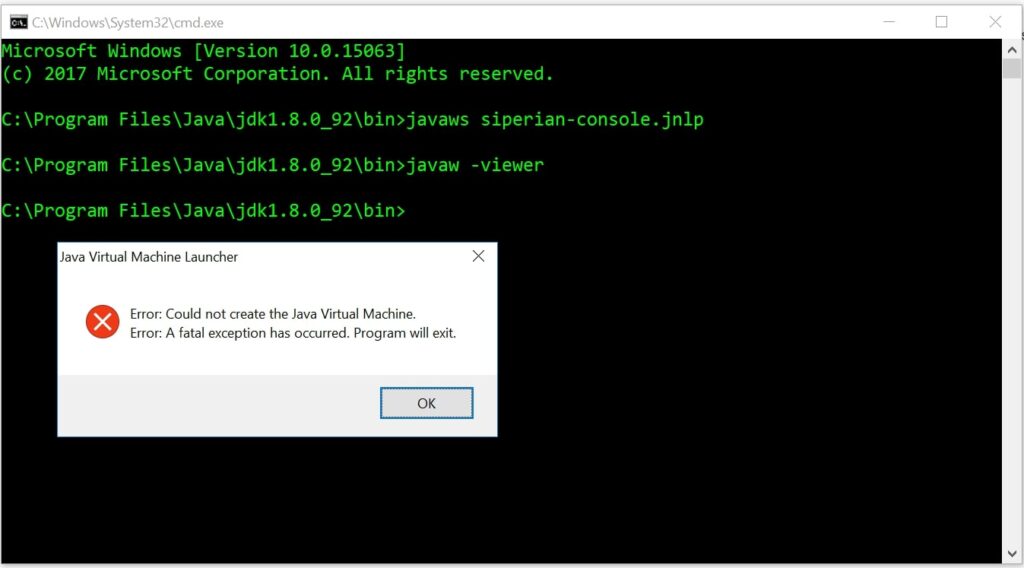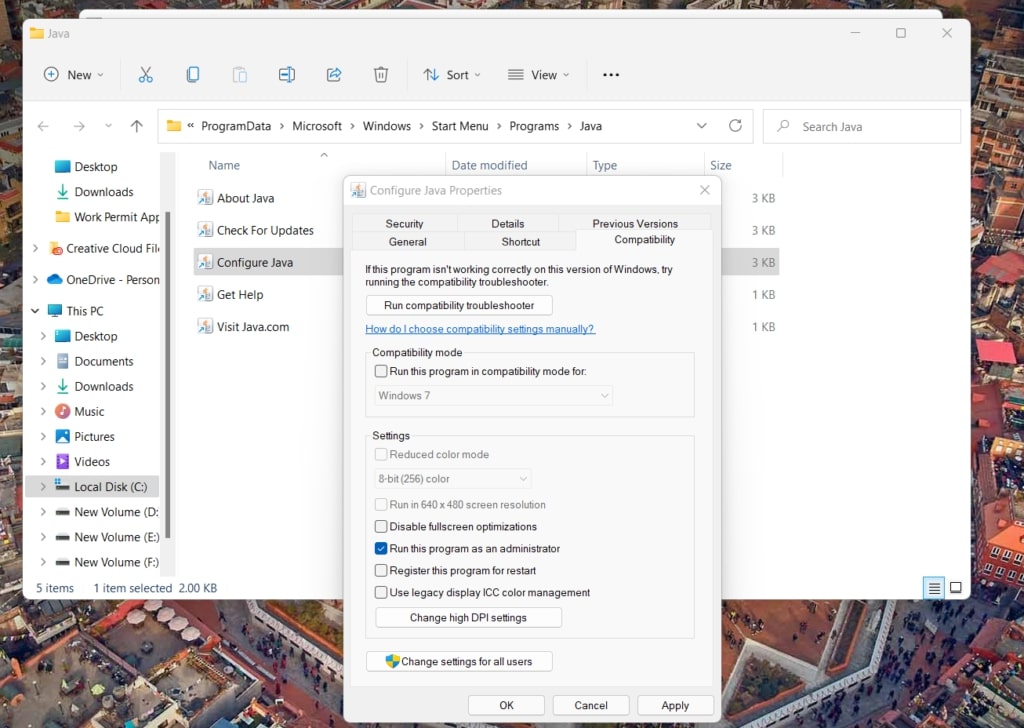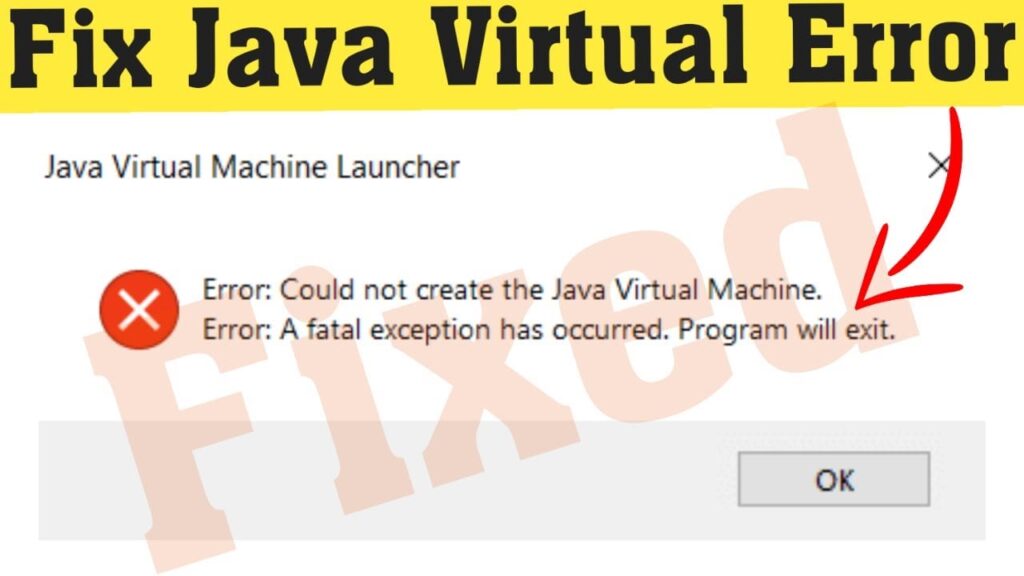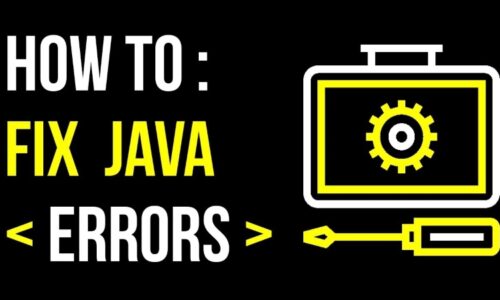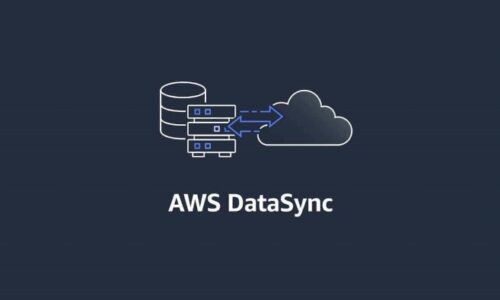The Java Virtual Machine (JVM) serves as the cornerstone of Java programming, facilitating the go-platform execution of Java packages. Despite its robustness, JVM errors can disrupt an application’s overall performance and user experience. Among these errors, the ‘Java Virtual Machine Launcher Error’ and ‘Error: Could Not Create the Java Virtual Machine‘ are typically encountered, indicating failures in JVM initialization. Understanding the foundation reasons behind this error, consisting of inadequate reminiscence allocation, misconfigured JVM parameters, and compatibility issues with Java versions, is vital for powerful troubleshooting. In this guide, we delve into the causes and solutions for JVM errors, presenting sensible insights and strategies to address them. By enforcing proactive measures like everyday monitoring, comprehensive checking out, and documentation, builders can mitigate the risk of Java Virtual Machine Launcher errors and ensure the reliability and balance of their Java applications.
Understanding the Java Virtual Machine Launcher Error:
The ‘Java Virtual Machine Launcher Error’ is an unusual difficulty encountered for the duration of the initialization of the Java Virtual Machine (JVM) when launching Java programs. This error commonly provides the message ‘Error: Could Not Create the Java Virtual Machine,’ indicating a failure in the JVM initialization system.
Causes of the Java Virtual Machine Launcher Error:
- Insufficient reminiscence allocation: Failure to allocate ok memory for JVM initialization.
- Misconfigured JVM parameters: Incorrect settings or conflicting parameters inside the JVM configuration.
- Compatibility problems with Java variations: Mismatch between the Java software and JVM versions.
- Conflicts with third-party libraries or packages: Interactions with incompatible components throughout initialization.
Impact of the Error on Java Applications:
- Inability to release: Prevents the Java application from launching correctly.
- Degraded performance: This can cause reduced software overall performance and balance.
- User frustration: Continual occurrences can frustrate customers and impact consumer experience negatively.
Error: Could Not Create the Java Virtual Machine:
The error message ‘Error: Could Not Create the Java Virtual Machine’ is frequently related to the Java Virtual Machine Launcher Error. It signifies a failure in developing the JVM instance essential for executing the Java software. Understanding the consequences of this error message is critical for diagnosing and resolving JVM-associated issues efficiently.
Detailed Explanation of the Error Message:
- Failure in JVM initialization: Indicates a failure in growing the JVM instance important for executing the Java utility.
- Resource allocation problem: Implies trouble in allocating the specified memory or device sources for JVM initialization.
- Critical error: This signifies a massive impediment within the JVM startup procedure, stopping the application from launching.
Common Scenarios Triggering This Error:
- Insufficient reminiscence allocation: Not enough reminiscence is allocated for the JVM to create the digital system instance.
- Misconfigured JVM parameters: Incorrect settings or conflicting parameters inside the JVM configuration.
- Compatibility issues with Java variations: Mismatch among the application’s Java model and the JVM surroundings.
- Conflicts with third-party additives: Interactions with incompatible libraries or applications during JVM initialization.
How This Error Affects Java Application Execution:
- Launch failure: Prevents the Java utility from launching efficiently, halting user interaction.
- Performance degradation: This can result in degraded application performance and stability due to inadequate useful resource allocation.
- User frustration: Results in user dissatisfaction and frustration because of the incapacity to get entry to utility functions or capability.
Investigating the Root Causes of Java Virtual Machine Launcher Errors:
To efficiently troubleshoot JVM errors, it is important to identify and apprehend their root causes. Common factors contributing to JVM errors encompass insufficient reminiscence allocation, misconfigured JVM parameters, compatibility problems with Java variations, and conflicts with 1/3-party libraries or packages.
Insufficient Memory Allocation:
- Not enough reminiscence allotted: JVM fails to allocate enough reminiscence for software execution.
- A common reason for JVM Errors: Inadequate reminiscence allocation regularly leads to diverse JVM Errors.
Explanation of Memory Allocation in JVM:
- Java heap control: JVM manages reminiscence allocation in the usage of the Java heap.
- Divided into regions: Heap divided into younger generation, vintage technology, and metaspace.
Effects of Inadequate Memory Allocation:
When the JVM fails to allocate sufficient memory to deal with the software’s requirements, it can bring about:
- Out-of-reminiscence Error: JVM may stumble upon memory exhaustion, leading to crashes.
- Performance degradation: Increased rubbish collection activity can degrade performance.
- Java Virtual Machine Launcher Error: Insufficient reminiscence allocation in the course of JVM initialization can cause the Launcher Error, stopping the software from launching correctly.
Misconfigured JVM Parameters:
- Incorrect settings: Parameters are set improperly inside the JVM configuration.
- Can result in error: Misconfigurations often result in JVM error and instability.
Understanding JVM Configuration Settings:
- Customization alternatives: JVM behavior can be customized with the usage of numerous configuration settings.
- Influence on overall performance: Configuration settings impact JVM performance and conduct.
Common Misconfigurations Leading to Errors:
Misconfigurations in JVM parameters can appear in different forms, inclusive of:
- Incorrect heap size: Improper values for preliminary and maximum heap length parameters.
- Garbage collection settings: Inefficient rubbish collection configurations.
- Runtime optimizations: Suboptimal settings for JIT compilation and runtime optimizations.
Compatibility Issues with Java Versions:
- Mismatched variations: The application’s Java model is incompatible with the JVM environment.
- Critical for compatibility: Ensuring compatibility is vital for correct utility execution.
Importance of Java Version Compatibility:
- Ensures balance: Compatibility ensures solid execution of the Java software.
- Prevents runtime error: Mismatched variations can cause runtime errors and instability.
How Mismatched Versions Can Trigger Errors:
When the Java application requires functions or APIs specific to a selected JDK model that is not supported by the JVM environment, it may bring about:
- Class version mismatches Incompatible class file variations between the software and JVM.
- Unsupported APIs: Newer APIs used in the utility may not be supported via older JVM variations.
- Runtime behavior discrepancies: Differences in runtime conduct or performance characteristics between JDK variations can affect the software’s execution on the JVM.
Conflicts with Third-Party Libraries or Applications:
- Interactions with dependencies: Third-party libraries or applications may also war with the JVM surroundings.
- A common source of error: Incompatibilities regularly lead to Java Virtual Machine Launcher errors and runtime problems.
Overview of Potential Conflicts:
Conflicts with third-party libraries or packages can arise because of:
- The dependency model mismatches Incompatible versions of dependencies.
- Native code dependencies: Libraries with local code dependencies might also come upon issues.
- Resource competition: Competition for system assets or conflicts in resource management.
Strategies for Resolving Conflicts or Finding Alternatives:
Resolving conflicts with third-party components entails:
- Dependency management: Ensure consistent dependency versions.
- Isolation or encapsulation: Separate conflicting components to mitigate conflicts.
- Alternative answers: Explore alternative libraries or frameworks.
Practical Solutions to Resolve Java Virtual Machine Launcher Errors:
Addressing JVM errors calls for a scientific method that specializes in figuring out the underlying reasons and enforcing targeted solutions. Here are sensible techniques to solve unusual JVM errors and repair the stableness of your Java packages.
Increasing Memory Allocation:
- Adjusting heap length: Increase preliminary and most heap length parameters (-Xms and -Xmx).
- Allocate extra memory: Allocate extra assets to deal with software necessities.
Step-by using-Step Guide to Adjusting JVM Memory Settings::
- Identify reminiscence requirements: Determine foremost heap length based on utility utilization.
- Modify JVM parameters: Edit configuration report or command-line arguments.
- Test and validate: Validate modifications through overall performance checking out and monitoring.
Best Practices for Optimizing Memory Allocation:
- Start conservatively: Begin with conservative heap size settings.
- Monitor dynamically: Adjust heap length dynamically based totally on runtime situations.
Troubleshooting JVM Configuration:
- Identify troubles: Review and correct misconfigured parameters.
- Validate settings: Ensure settings align with best practices and recommendations.
Reviewing and Correcting JVM Parameters:
- Audit configuration: Analyze present parameters for inconsistencies.
- Refer to documentation: Consult official documentation for proper parameter usage.
- Adjust settings: Make vital modifications based totally on hints and first-class practices.
Tools for Diagnosing and Fixing Configuration Issues:
- JVM tracking equipment: Use equipment like VisualVM or JConsole to research metrics.
- Configuration validation: Utilize validation plugins or command-line utilities.
Updating Java to the Compatible Version:
- Check for updates: Regularly check for Java updates from reputable resources.
- Install the modern model: Download and install a like-minded JDK version for the application.
Checking for Java Updates and Installing Them:
- Visit reliable sources: Check Oracle or OpenJDK websites for updates.
- Download and install: Obtain the modern JDK model and install it on the system.
- Test compatibility: Verify compatibility with current packages before deployment.
Ensuring Compatibility with Existing Applications
- Compatibility trying out: Test application throughout exclusive Java variations.
- Dependency validation: Validate compatibility of third-party libraries.
Resolving Conflicts with Third-Party Components
- Identify conflicts: Analyze dependencies to pinpoint conflicting additives.
- Resolve dependencies: Manage model conflicts and ensure compatibility.
Identifying Conflicting Components
- Dependency analysis: Examine the dependency tree for conflicts.
- Stack trace inspection: Analyze error logs to discover problematic components.
- Collaborate with providers: Engage with third-party companies or open-source communities to seek assistance in resolving compatibility troubles and acquiring up-to-date variations or patches.
Strategies for Resolving Conflicts or Finding Alternatives
- Dependency management: Ensure consistency in dependency variations.
- Isolation or modularization: Separate conflicting additives to decrease interactions.
- Exploring options: Consider opportunity libraries or frameworks without conflicts.
Proactive Measures to Prevent Java Virtual Machine Launcher Errors:
Prevention is always better than cure for JVM errors. Implementing proactive measures and best practices can assist mitigate the danger of encountering JVM-related troubles and ensure the reliability and balance of your Java applications.
Regular Monitoring and Maintenance:
- Continuous monitoring: Regularly reveal JVM health and performance.
- Scheduled preservation: Conduct habitual preservation tasks to prevent issues.
Importance of Proactive Monitoring:
- Early detection: Identifying troubles earlier than they increase.
- Optimizing performance: Ensuring the most excellent JVM overall performance over the years.
- Predictive evaluation: Analyzing ancient information and developments helps count on ability JVM errors or overall performance bottlenecks, permitting proactive remediation measures.
Tools and Techniques for Monitoring JVM Health:
- JVM tracking tools: Utilize equipment like VisualVM or Prometheus.
- Log analysis: Analyze logs for overall performance insights and anomalies.
Testing and Validation Procedures:
- Comprehensive testing: Test application functionality and performance.
- Validation protocols: Verify configurations and compatibility before deployment.
Implementing Comprehensive Testing Protocols:
- Unit checking out: Conduct thorough unit checking out of character components and modules to validate their conduct and functionality in isolation.
- Integration checking out: Perform integration testing to verify the interloper
- Compatibility checking out: Test the Java application throughout more than one JVM environment and configurations to ensure compatibility and reliability.
Validating JVM Configurations Before Deployment:
- Configuration validation: Ensure the correctness of JVM settings.
- Deployment testing: Test the software with real-global eventualities earlier than deployment
Documentation and Knowledge Sharing:
- Documenting configurations: Create documentation for JVM settings and processes.
- Sharing answers: Share troubleshooting reports and solutions inside the team.
Creating Documentation for JVM Configurations:
- Detailed publications: Document JVM configurations and best practices.
- Reference materials: Provide a repository of troubleshooting steps.
Sharing Experiences and Solutions Within the Team:
- Team collaboration: Foster an environment for sharing insights and answers.
- Learning from experiences: Benefit from collective expertise and information.
Case Studies: Real-World Examples of Java Virtual Machine Launcher Error Resolution
To illustrate the practical software of troubleshooting techniques and solutions discussed in this guide permits the discovery of actual-international case research highlighting the hit resolution of JVM error.
Case Study 1: Memory Allocation Issue Resolved:
Problem Statement:
A Java web software was experiencing common out-of-reminiscence errors and crashes in the course of peak utilization intervals, impacting the user experience and gadget balance.
Solution:
- Memory profiling: Conducted reminiscence profiling of the usage of JVM monitoring equipment to perceive memory hotspots and useful resource-in-depth operations inside the utility.
- Heap length optimization: Increased the JVM heap size and changed rubbish collection settings to house the software’s memory requirements and reduce memory pressure.
- Performance trying out: Conducted performance checking out and cargo testing to validate the effectiveness of the memory optimization measures and make certain balances below the top hundreds.
Case Study 2: Configuration Misalignment Fixed:
Problem Statement:
An organization’s Java software deployed across a couple of environments is experiencing configuration discrepancies and inconsistencies, leading to runtime errors and unpredictable behavior.
Solution:
- Configuration control: Implemented centralized configuration control using gear like Apache ZooKeeper or Spring Cloud Config to ensure consistency and synchronization of configuration settings across all environments.
- Automated deployment pipelines: Established computerized deployment pipelines with configuration validation checks to enforce consistency and integrity of JVM configuration settings all through deployment.
- Continuous integration and trying out: Integrated configuration validation checks into the non-stop integration (CI) pipeline to detect and save your configuration misalignments early in the development lifecycle.
Case Study 3: Java Version Compatibility Addressed
Problem Statement:
A legacy Java utility going for walks on an old JDK model encountered compatibility troubles with the brand-new JVM surroundings, resulting in runtime error and overall performance degradation.
Solution:
- JDK upgrade planning: Developed a phased migration plan to upgrade the software to a supported JDK version well matched with the state-of-the-art JVM surroundings.
- Compatibility testing: Conducted huge compatibility testing throughout distinct JDK variations and JVM environments to perceive and cope with ability troubles or regressions.
- Fallback mechanisms: Implemented fallback mechanisms or compatibility shims to ensure backward compatibility with older JDK versions even as migrating to modern surroundings.
Additional Tips:
- Optimize Garbage Collection: Fine-song garbage collection settings to limit pauses and enhance reminiscence utilization, for that reason lowering the chance of memory-associated Java Virtual Machine Launcher errors.
- Use JVM Profiling Tools: Employ profiling tools like YourKit or JProfiler to investigate JVM’s overall performance, become aware of bottlenecks, and optimize useful resource usage for superior stability.
- Consider JVM Tuning: Explore superior JVM tuning techniques consisting of adjusting thread swimming pools, optimizing JIT compilation, and configuring runtime parameters to align with unique application necessities and workload characteristics.
- Monitor System Resources: Monitor gadget assets which include CPU, memory, and disk usage to perceive capacity useful resource competition problems that can impact JVM’s overall performance and stability.
- Regularly Update Dependencies: Keep third-party libraries and frameworks up to date to leverage performance improvements, bug fixes, and compatibility improvements which can mitigate compatibility-related JVM errors.
Conclusion:
In conclusion, proactive management and information of Java Virtual Machine Launcher Error(JVM) errors are crucial for maintaining the stability and overall performance of Java programs. By addressing root reasons including inadequate memory allocation, misconfigured JVM parameters, and compatibility problems, builders can mitigate the impact of JVM error. Implementing sensible solutions, together with increasing reminiscence allocation, troubleshooting configuration troubles, and resolving conflicts with third-party components, allows smoother utility execution. Furthermore, adopting proactive measures like normal tracking, comprehensive checking out, and documentation enables early detection and prevention of Java Virtual Machine Launcher errors. Through collaboration, know-how sharing, and non-stop improvement, teams can correctly navigate and overcome JVM-demanding situations, ensuring the reliability and achievement of their Java-based total projects.
FAQs:
Q1: What do I need to do if I stumble upon the ‘Java Virtual Machine Launcher Error’?
Ans: If you come across the ‘Java Virtual Machine Launcher Error,’ it is critical to check for memory allocation issues, misconfigured JVM parameters, compatibility issues with Java variations, or conflicts with third-party additives. Adjust JVM settings, update Java to a well-matched version, and remedy conflicts to cope with the error.
Q2: How can I prevent Java Virtual Machine Launcher errors in my Java programs?
Ans: To save you JVM error, undertake proactive measures consisting of ordinary tracking and renovation, complete checking out, documentation of JVM configurations, and information sharing within your crew. Address memory allocation issues, optimize JVM settings, ensure compatibility with Java variations, and clear up conflicts with third-party components.
Q3: What gear can I use for monitoring JVM health and overall performance?
Ans: Several pieces of equipment are to be had for tracking JVM fitness and overall performance, together with Java Mission Control, VisualVM, Prometheus with Grafana, and ELK stack (Elasticsearch, Logstash, Kibana) for log evaluation. These gear offer insights into JVM metrics, memory usage, rubbish collection behavior, and gadget resource usage.
Q4: How can I make certain compatibility between my Java software and the JVM surroundings?
Ans: To make certain compatibility between your Java application and the JVM surroundings, frequently replace Java with a well-matched model, conduct compatibility testing throughout special JDK variations and JVM environments, and manage dependencies to keep away from conflicts. Follow pleasant practices for JVM configuration, reminiscence allocation, and runtime optimizations.
Q5: What are some unusual causes of Java Virtual Machine Launcher errors?
Ans: Common causes of JVM errors encompass insufficient reminiscence allocation, misconfigured JVM parameters, compatibility problems with Java variations, and conflicts with third-party libraries or programs. Identifying and addressing those root causes is important for resolving JVM errors successfully.
READ MORE: Unlocking Success: Exploring the Benefits of Workday Adaptive Planning

